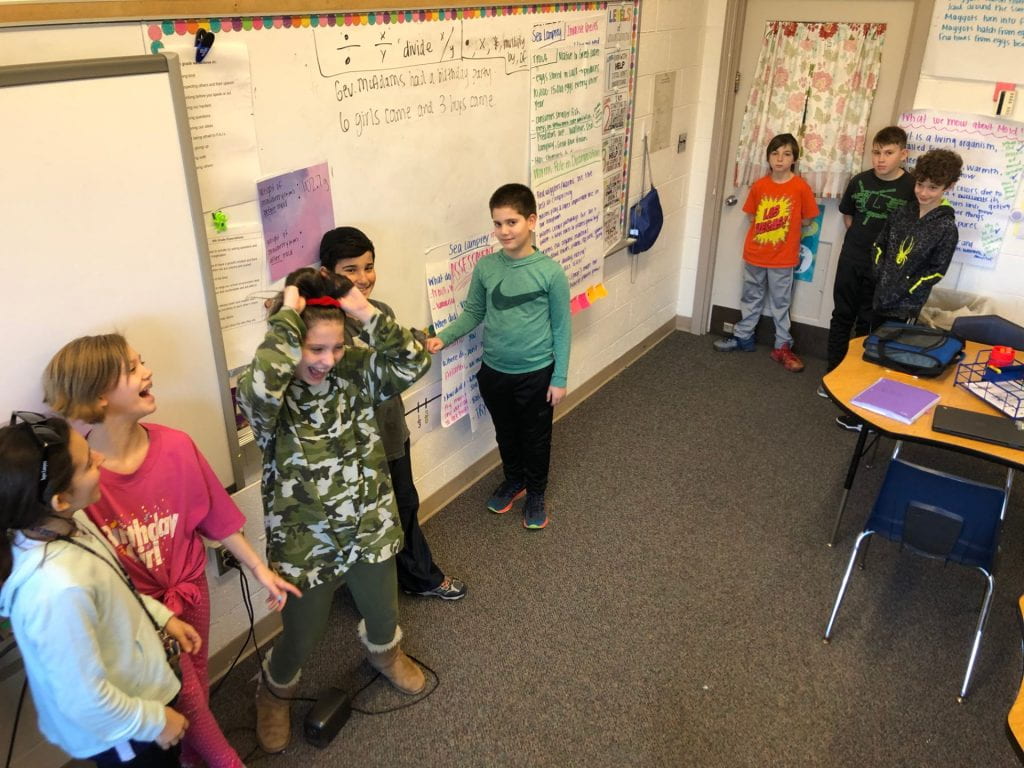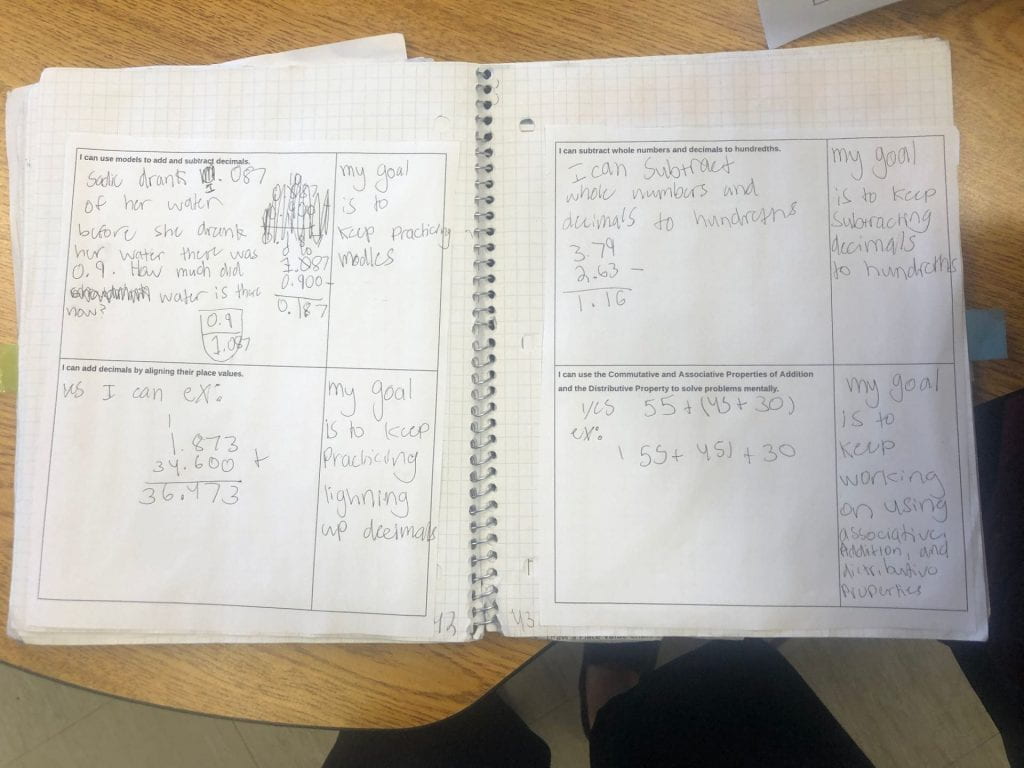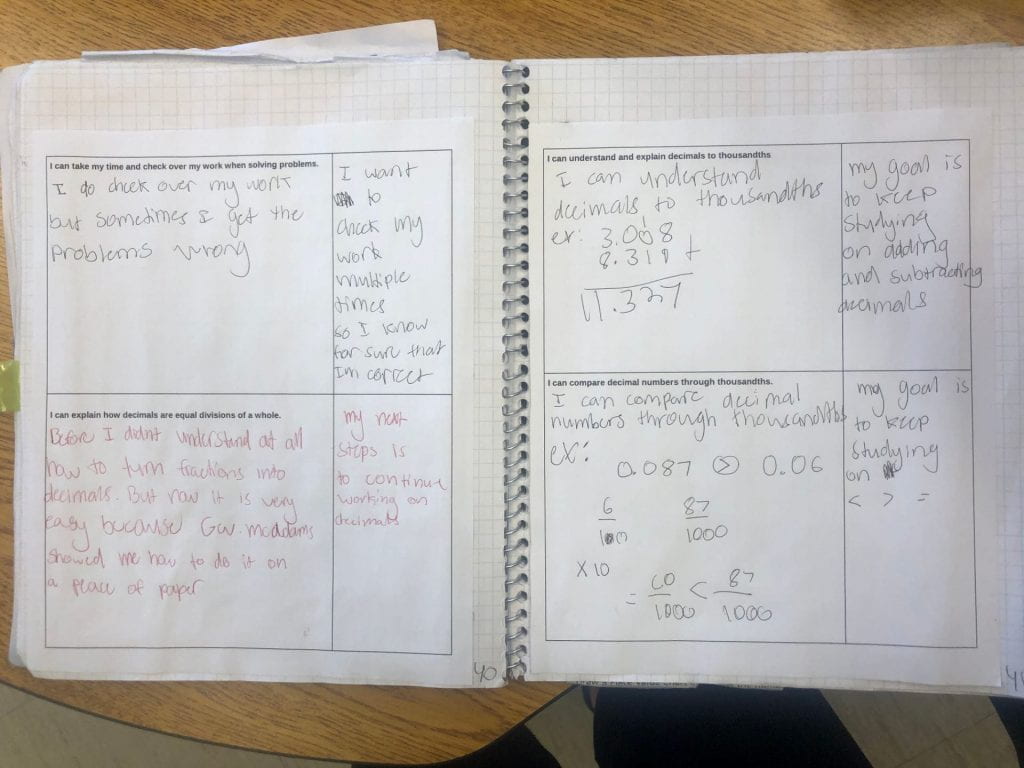This week we kicked off our 3rd math unit on multiplication and division of fractions!
Shown below are the standards, written in ‘I Can’ statements, we will be working on throughout the next month or so:
- I can multiply a whole number by a unit fraction.
- I can multiply a whole number by a non-unit fraction.
- I can use models to explain multiplication of fractions.
- I can simplify fractions before multiplying.
- I can multiply mixed numbers.
- I can explain and show the Commutative, Associative, and Distributive Properties with fractions.
- I can compare the results of different fraction operations.
- I can solve word problems with fractions.
- I can predict how the size of a fractional factor will affect the size of the product.
- I can divide fractions and show the process through modeling.
- I can solve division word problems.
- I can distinguish between multiplication and division based on the language of word problems.
The 5th grade mathematicians have been doing an awesome job explaining and showing their work to prove their answers are correct this week.
One tricky concept we discussed this week was writing comparison equations and statements using multiplication and division to explain a situation.
For example, let’s say there were 5 apples and 10 oranges. Listed below are some comparison equations and/or statements that would describe the apples and oranges:
- There are 2 times as many oranges as apples OR Oranges=2 x Apples
- There are 1/2 times as many apples as there are oranges OR Apples = Oranges x 1/2
- There are half as many apples than oranges OR Apples = Oranges / 2
This was a hard concept to wrap our heads around so we decided to act out the situation to better understand how to compare.

I continue to be impressed with your children and the effort they put forth into making sure they understand what we are learning. They ask amazing questions and are never afraid to ask for help when they need it.
I feel so lucky to have the opportunity to teach them!
Have a wonderful break,
Gev. McAdams
Over the past week, the 6th grade scientists have been hard at work writing their first lengthy scientific explanation. Over the course of our unit, we have been gathering evidence that our scientists are now using to prove what they are claiming.
Here are some of their claims:
- The sea lamprey are the top predator in the Great Lakes.
- The sea lamprey caused a decline in the trout population.
- Asian carp are destroying the Great Lakes ecosystem.
We are currently in the midst of our first drafts. After break, we will work on revisions to improve our explanations further.
Take a look at some portions of 6th graders first drafts below:
“The first reason the sea lamprey is the top predator in the Great Lakes is because of its population. According to the Great Lakes population charts, from 1950 to 1960, the sea lamprey population caused other organisms population to go down. By 1960 the sea lamprey population increased to about 300,000. By 1960 the trout population had declined to about 75,000. This means that the sea lamprey eats so much that its population increases while it’s prey’s population declines and starts an indirect effect, which causes other organisms to decline. Another example is based on the Great Lakes food webs, the sea lamprey doesn’t have any predators in the Great Lakes. This shows that the sea lamprey doesn’t have to worry about any predators eating them, which proves that its the top predator in the Great Lakes.”
“According to the DNR, Asain Carp is the #1 purpose to drain a lake. There have been 4 lakes drained in Wisconsin because of carp. The people are forced to do this because the carp are poisoning the water by uprooting plants to make burrows making the water toxic for other fish because there is too much mud and rocks. This means that carp do not only take up all the food but they are forcing other species to move out to fresher waters where the carp have already eaten all the food.”
“The final reason is that the sea lampreys have a deadly mouth. According to fisherman’s journal, the fisherman noticed all the fish having big wounds from sea lamprey. This means that if sea lamprey increases, a lot of fish can not survive because of sea lamprey eating habits. That is bad because the ecosystem will collapse because fish are getting killed rapidly. Another example is when I was dissecting sea lamprey, their mouths had a lot of teeth and were very strong. This shows that their mouths can break through the very tough skin. That is bad because fish that have tough skin to protect themselves, and those fish are no longer safe because sea lamprey’s mouth is so strong and toothy.”
Stay tuned to read their final drafts!
Have a wonderful break,
Gev. McAdams
I was never taught how to reflect when I was in elementary and middle school. This made reflection really challenging for me as I began to get older because I was never taught the how and why behind it.
I am so grateful that MJDS allows time and practice for both teachers and students to work on and practice this because it is such a crucial skill to have.
Here is what I’ve learned so far:
- Reflection allows you to become aware of what you learned.
- Reflection allows you to identify what you found interesting, how you feel about it, and what you can do to continue to grow.
- Reflection allows us to think more deeply about concepts and ideas.
- Reflection allows us to determine what things we feel “good” about and what things we need to work on further.
The 5th graders have been working so hard reflecting in math this unit.
Each lesson in math is focused on a different standard or ‘I can’ statement that fits in with our unit. I have been so impressed with the 5th graders reflections on each statement. Through this process the kids have been able to identify the standards that they are not totally comfortable with yet and the standards they feel confident in. This allowed them to identify what they still need to work on so they can be successful in their future math work, as well as on assessments. This is a very new process for us and is something that I know will become more natural with time and practice.
I am so excited to continue this process with your children and watch them grow. Check out one 5th graders reflection below!

 Have a great weekend,
Have a great weekend,
Gev. McAdams
Today, we began to investigate the role worms play in the decomposition of organisms (aka Worm Friday!).
Based on our past experiments, we know worms play a role in decomposition in some shape, way, or form. However, we are not totally convinced as a group of scientists what that role is YET.
To figure things out, we often conduct experiments or watch videos to identify what we notice and wonder, which then helps us to decide what we need to investigate next.
Today, we watched the video below, which shows a pumpkin decomposing over time in a bin of soil and worms. The scientists started to record their noticings and wonderings based on the video.
As scientists, we love learning and figuring things out together. That being said, we would love to hear your input! What do YOU notice and wonder based on this video?


